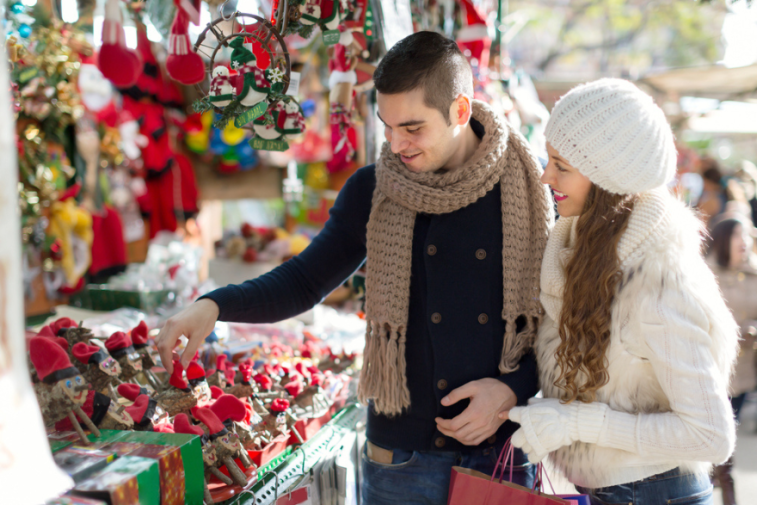Like many travelers, I’ve enjoyed Christmas market cruises on European rivers like the Rhine and Danube, visiting the sometimes-snowy markets in Germany, Austria, Hungary, and France. But what if you could enjoy Christmas markets in the Mediterranean?
You can – and a winter cruise on Star Legend make it possible. With itineraries ranging from seven to 24 days, you can easily find a cruise that allows you to explore Christmas markets in Italy, Spain, and the French Riviera.
What’s so special about Europe’s holiday markets?
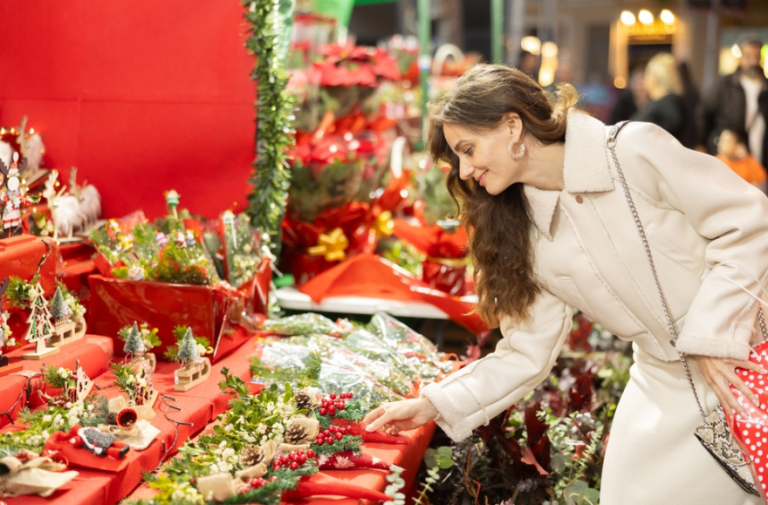
For those who may be wondering what’s so special about Christmas markets, you should consider them as way more than a shopping fest. Christmas markets across Europe are social gatherings, with locals coming together to enjoy the food, drink, and camaraderie of the season. The markets overflow with culture and history disguised as street food and holiday decorations. Dishes served are usually hyperlocal.
Decorations often reflect centuries of cultural change that may be specific to only one region. For instance, the story behind the “little saints” figurines of the Provencal region of France is both charming and inspiring as it shows how revolution sometimes comes in very tiny forms.
Another plus? Christmas markets put you shoulder to shoulder with locals, experiencing their culture alongside them. People are laughing, celebrating, eating the treats of their childhood.
Most markets are free of charge to wander through. You’ll sometimes pay extra for headliner entertainment, amusement rides, and special exhibits. Because many of these markets are annual events that have been held in the same location, often for decades or even centuries, details about times and activities are often not posted until right before the market opens. It’s one of those “everybody who lives there already knows the scoop” sort of deal. With that in mind, after scouring historical information, here’s what I can share.
Italy’s Christmas Markets
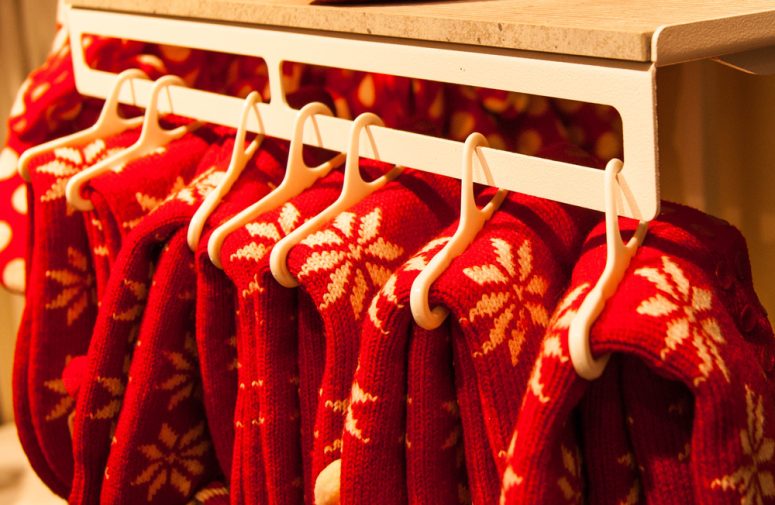
Italians love the Christmas season, which officially runs from December 8 to January 6, or Epiphany. Italy is almost eighty percent Catholic, so expect an abundance of seasonal décor throughout its port cities. Nativity scenes, or presepi, celebrating the story of Mary, Joseph, and Baby Jesus, are the number one item to shop for in the markets. From hand carved versions to delicate porcelain figures, you should have plenty of choices if you are looking for a souvenir to take home. Hopefully, you’ll have the chance to enjoy a Presepe viventi (or living nativity) in the city streets. And don’t be surprised to also find red underwear in the shops and markets. It’s a wearable New Year’s Eve tradition in Italy that’s believed to help ward off negativity – and welcome love – in the new year.
Instead of Santa Claus, Italian children await the arrival of the Befana, a good witch who comes on Epiphany Eve bearing sweets and toys for good children and lumps of coal placed in the shoes and socks of children who were not so good.
Italians say Merry Christmas, buon Natale (pronounced bwon na TA lay) as well as Happy Christmas, Felice Natale (fuh LEE chay nah TA lay).
What to eat and drink:
Definitely try the vin Brulé, the Italian version of warm spiced wine, with an oddly French name. The flavors are similar to those of Gluhwein found in German Christmas markets. Expect the aroma and taste of cinnamon to stand out, but with a hint of cloves as well. Chocolate lovers should be on the lookout for cioccolata calda, thick hot chocolate you almost have to drink with a spoon. Sweet treats to look for include panettone, a sweet bread loaf filled with candied fruits, struffoli (fried dough balls drizzled with honey), and delicate waffle sugar cookies called pizzelles, sometimes rolled into cream-filled cannoli.
Itineraries to consider:
You can find Italian ports such as Genoa, Livorno and Rome on 7-day Europe’s Winter Riviera cruises between Rome and Barcelona.
Here are our picks for best Italian Christmas markets:
Rome: The best market for its surrounding scenery
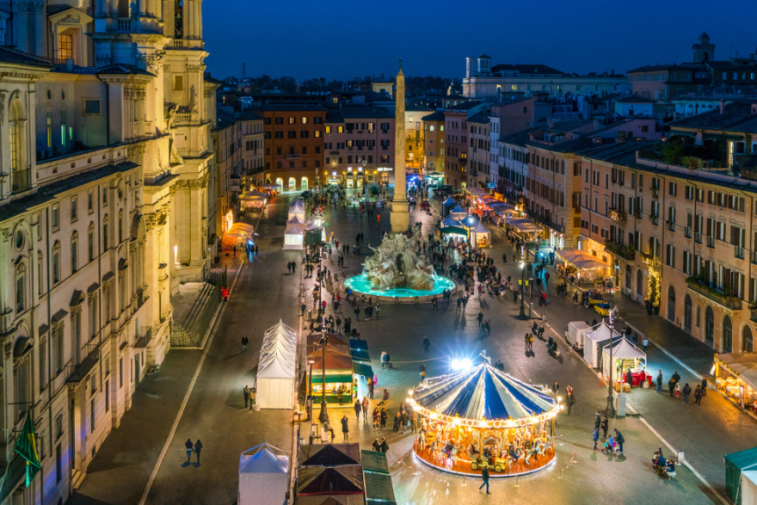
Christmas market in Rome’s Piazza Navona/Shutterstock
The largest market in Rome is Christmas and Epiphany in Piazza Navona, open Dec 8 to January 6. The long, narrow plaza is home to Fontana del Nettuno (the fountain of Neptune and the octopus) and the Sant’ Agnese in Agone baroque church. The market features a puppet theater and street artists, in addition to plenty of shopping.
For more information:
The official Rome Tourism site is a good place for details, though dates and times may not be current until right before the season begins. Because cruises begin or end in Rome, visiting the Piazza Navona market would need to be part of your pre- or post-cruise plans.
Livorno (Florence and Pisa): The best Italian market with a worldly feel
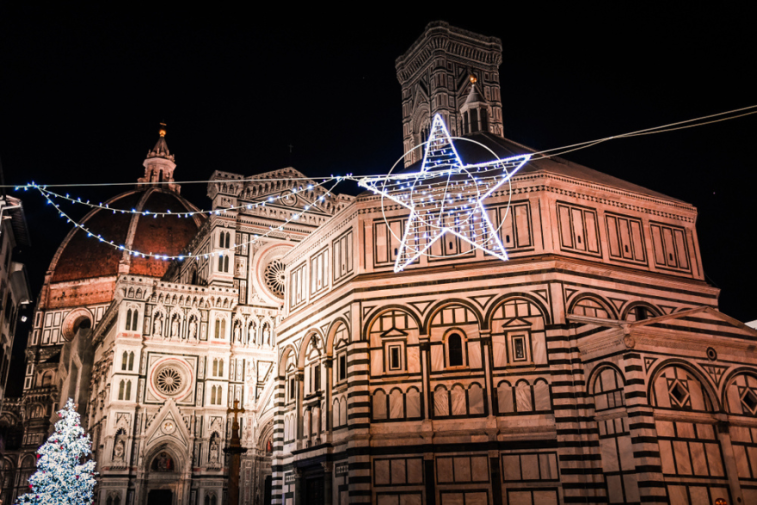
Christmas market around Santa Croce, in Florence/Shutterstock
The best part of this stop on Star Legend’s winter itineraries is that it’s an overnight stop, allowing you to enjoy the evening’s holiday lights. Florence is home to a traditional German influenced market, called Weihnachtsmarkt with crafts and food from across Europe. Located in Piazza Santa Croce, you can sample strudel and Bavarian pretzels alongside Italian favorites like necci and ciaffagnoni — chocolate and chestnut flavored crepes that are rolled into cannoli. There are also Hungarian chimney cakes to consider.
For more information:
The Piazza Santa Croce Christmas Market runs from November 28 to December 20th from 10 a.m. to 10 p.m. daily. Information is available at Visit Florence or at the Mercato di Natale Firenze Facebook page. Pisa, another town worth a visit when Star Legend calls at Livorno, hosts an annual market and ice rink. Current information is not yet posted at the time we published this story, but keep checking at Visit Terre di Pisa.
Genoa: The best Christmas market for enjoying holiday lights
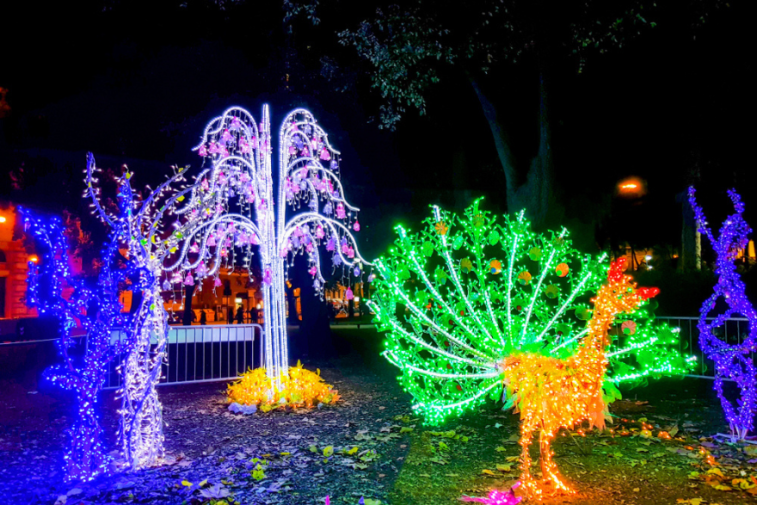
Star Legend stays in Genoa until 10 p.m., allowing more time to explore the city and take in the fantasy of holiday lights. The annual St. Nicholas Market, featuring shopping and food stalls sponsored by local organizations and charities, takes place in Piazza Piccapietra.
For more information:
The market runs from November 30 to December 23 and is open daily. Find details at Mercatino di San Nicola.
France’s Christmas markets (French Riviera)
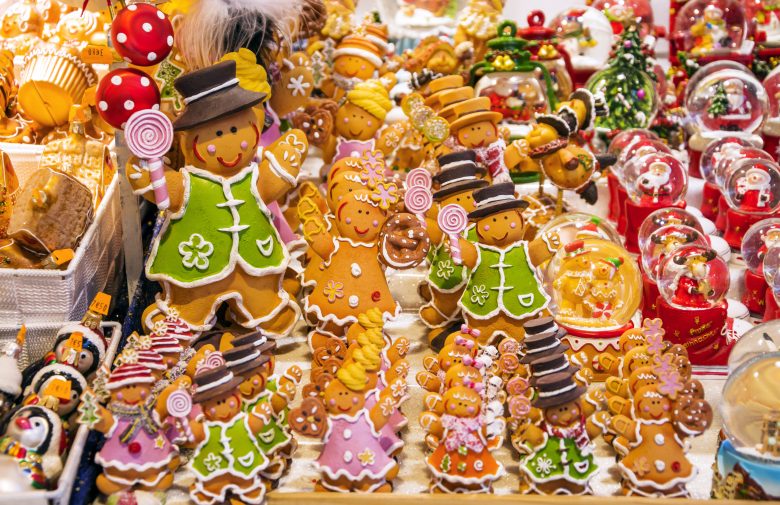
Atmosphere and traditions:
Christmas markets among the palm trees of the French Riviera strike an interesting juxtaposition, as do the vendors serving champagne and oysters. Large French Christmas markets often feature street performers and carnival rides.
As in Italy, the nativity scene or creche, is a popular decoration. Markets will have them made from a wide variety of materials. The French add a multitude of characters to the creche. Figures often represent local village life. Look for hand-painted Provencal Santons or “little saints” in the form of everyday people like bakers, shopkeepers, or farmers. The Santons became popular during the French Revolution when the more religious creche were banned. French children leave their shoes by the fire for Pere Noel (Father Christmas) on Christmas Eve, along with treats for his donkey, Gui.
What to eat and drink:
In addition to oysters and Champagne, you can also expect chestnuts, artisan chocolates, and, because it is France, crepes. Provencal nougat famously comes in a variety of flavors and is laced with almonds or fruit. Look for the traditional Provencal Les Treize desserts de Noel, or thirteen desserts representing Jesus and his twelve apostles.
Itineraries to consider:
Nice and Cannes are both part of the schedule on the dreamy 16-day Star Collector: Winter in Spain and the Rivieras cruise, as well as the shorter 7-day itineraries between Rome and Barcelona.
Nice: The best French Christmas market for glitz and glam
Nice is the fifth largest city in France, and just happens to be positioned a mere 12.4 miles (20 km) from the glamorous Riviera destination of Monte Carlo. Those two facts combine for a rather glitzy market experience known as Le Village de Noel. It is definitely your best opportunity to shop for a celebrity Santon.
For more information:
The market is held in the central Jardin (garden), one of the oldest gardens in Nice. A giant Ferris wheel towers over the wooden chalet shopping stalls. It opens in late November and runs daily through January 1. Explore Nice Cote d’Azur has details.
Cannes: The best artsy Christmas market
Atmosphere and traditions:
Nativity scenes or belenes, dominate the decorations throughout the port cities, with plenty of miniatures to shop for in the markets. Children in Spain await the arrival of the Three Kings – Melchor, Gaspar, and Baltazar, who bring gifts on January 5 (the eve of Epiphany.)
Cannes is a much smaller city than Nice, so expect a more intimate market. Sometimes those are the best, usually with an abundance of local artisans demonstrating their crafts. The celebration in Cannes takes place at Village de Noel, and includes a carnival, or fun fair, parades, musical performances, Santa’s chalet, and more than fifty craft cabins.
For more information:
The market runs from early December through January 7, with hours of operation from 11 a.m. to 9 p.m. Sunday to Thursday and until 10 p.m. on Friday and Saturday. Check the Cote d’ Azur France website for current information when it is posted closer to the event. Cannes is scheduled as a port of call on select itineraries but on the sailings where the ship overnights in Nice, Cannes is accessible via a 30-minute train ride that departs Nice roughly every twenty minutes. It would be possible to visit the Nice market on the evening of arrival and take the train to Cannes the next day.
Spain’s Christmas markets
Browsing at Barcelona’s market/Shutterstock
Atmosphere and traditions:
Nativity scenes or belenes, dominate the decorations throughout the port cities, with plenty of miniatures to shop for in the markets. Children in Spain await the arrival of the Three Kings – Melchor, Gaspar, and Baltazar, who bring gifts on January 5 (the eve of Epiphany.)
What to eat and drink:
The Spanish version of nougat is turrón, which may be soft and fluffy or might be more like a brittle, depending on the recipe. Because Christmas markets (and fairs in general) are best enjoyed while eating fried dough, pestiños are the Spanish option of that to look for. You’ll likely also see fried or roasted potatoes or sweet potatoes (patatas bravas) sold in paper cones, often along with roasted chestnuts. Vino caliente is the mulled wine of the season, but don’t miss out on chocolate caliente, Spain’s spoonable, dippable pudding-like hot chocolate. Churros are a must to have the full experience.
Itineraries to consider:
Windstar’s 16-day itineraries include multiple stops in Spain, while the shorter 7-day Southern Spain Winter Escapes cruise is focused on Spanish ports, including overnight stays in Barcelona and Malaga.
Barcelona: The best Christmas market next to a giant cathedral, also the best for odd regional traditions
Catalonian belenes feature an interesting interloper known as El caganer, or the crapper. Look for a cheeky man with his pants down going poo. The tradition is to hide the caganer in the nativity so children can find the disrespectful fellow. You will find El caganer figurines today with familiar faces, particularly those of politicians and celebrities. Also look for Tio de Nadal, sometimes called Caga Tio. These are logs with cheerful little faces painted on one end. The logs are supposed to pop out presents from the other end.
Barcelona hosts the oldest Christmas market in Spain. Fira de Santa llucia has been held next to the Cathedral de Barcelona since 1786. The majority of the stalls sell Christmas themed merchandise, much of it locally produced. Expect musical performances, parades, and an exhibition of nativity scenes. Star Legend stays overnight in Barcelona allowing ample time to see the city and the markets.
For more information:
The fair runs from November 24 to December 23 with daily operations. The market has its own website with details from the previous year. Look for details on the current year as it grows nearer.
Valencia: The best Christmas market for eating paella
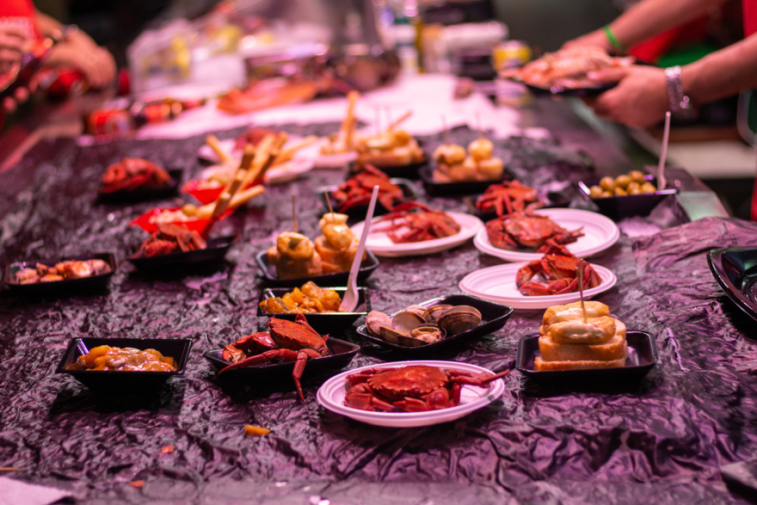
Valencia’s Christmas market features an ice rink and a program of entertainment in addition to the artisans. The market is located in the sports area of Colegio San Antonio Abad. Valencia is known as the cradle of paella, so it would stand to reason that you’d get only the best at a Christmas market here, it’s also known across the nation for its regionally specific turrón flavors.
For more information:
As with many markets, this year’s details are not yet posted, but check with Visit Valencia as December grows nearer.
Cartagena: Possibly the hardest Christmas market to find.
The annual Christmas market in Cartagena seems to move around from year to year, but for the past two years it was held on the waterfront next to the Alfonso XIII jetty. It opens on December 14 and runs daily through January 7, following Three Kings Day. The fair and market features circus shows, karaoke, food, and artisans. The interesting (and somewhat confusing) thing to keep in mind when looking for (or asking directions to) Christmas markets in Cartagena is that there is a Christmas Fort (Fuerte de Navidad). You’ll pass by this restored 17th century fortress as the ship enters the port.
Cartagena is somewhat famous in the region for its municipal nativity or belen, which incorporates the local landscape, including the archaeological wonders the city is known for like the Roman theater.
For more information:
Current information has not been posted, but you can keep tabs using the Facebook page of the local news outlet, Murcia Today. Murcia is the Spanish region that is home to Cartagena.
Malaga: The best Christmas markets near a beach

In Malaga, look for two large Christmas markets. One is on the waterfront, at Pier One (Muelle Uno), which makes it roughly a 15 minute walk from the cruise terminal. The other is in the city center at Paseo del Parque. The weather this far south in Spain averages a balmy 86 degrees Fahrenheit. That makes for a delightful day experiencing holiday traditions in one of the oldest cities in the world (Malaga was established well before the birth of Christ), and you can finish the day with a beach break. Playa la Malagueta is a public beach within walking distance of the cruise terminal.
For more information:
Muelle Uno has a Facebook page that should prove useful in finding details about the Christmas market there. Guide to Malaga offers information about the markets as well as a list of nativity scenes to view.
Palma de Mallorca: The best Christmas markets on an island
Palma de Mallorca is the only island on most of Star Legend’s winter itineraries – a definite change from the rest of the year when cruises in the Aegean Islands are commonplace. The resort city of Palma has multiple Christmas markets to explore. Check Plaza Mayor, Plaza España, and La Rambla Palma for a selection of Spanish artistry, including leather goods, displayed alongside the usual selection of nativity figurines and ornaments. All three markets are in the city center, which should be an easy taxi ride from the port. And just in case you haven’t already been tempted, this is as good a place as any to try churros and chocolate. It’s the holidays, so it’s okay to indulge.
For more information:
ABC-Mallorca has excellent information online about the various markets, including maps and directions.


